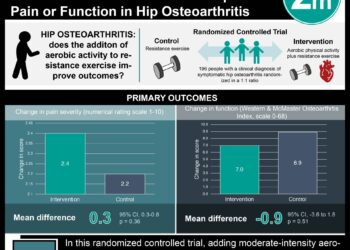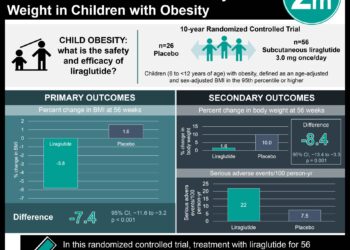Low activity levels observed in youth dance classes
1. Levels of moderate-to-vigorous activity were measured among girls in dance classes ranging over 7 different dance types. Although there were significant differences in activity level based on dance type in children, no differences in activity were observed for adolescents.
2. Across all types of dance except ballet, children were more active than adolescents. In addition, both age groups attending classes at private dance studios were significantly more active than those at community centers.
Evidence Rating Level: 2 (Good)
Study Rundown: It is recommended that children and adolescents get 60 minutes of moderate-to-vigorous activity (MVPA) every day. The Centers for Disease Control and Prevention (CDC) suggest that schools supply 30 minutes of MVPA and the other half be gained through after-school activities. Although there is a well-established gender gap in levels of activity, the popularity of dance among girls has the potential to close this gap. The National Dance Education Association estimates that approximately 43% of U.S. children and adolescents get some sort of dance instruction, making it an extremely popular form of physical activity. This study explored the activity levels of girls among 7 types of dance classes. Overall, children had more MVPA compared to adolescents in all types of dance, except ballet. Among children, there were significant differences in activity level between types of dance, with highest MVPA minutes in children taking hip-hop classes. No significant difference among dance types was noted for adolescents. Both children and adolescents in private dance studios earned more MVPA than those in community classes. Results of this study indicated that less than 10% of both groups met the 30-minute activity guideline. While this study uncovers the misconception that dance classes provide adequate MVPA, the findings are limited by its geographically restricted sample. This study supports the need for increased activity levels in dance classes for this popular form of exercise to have a more meaningful impact on the health of participants.
Click to read the study, published today in Pediatrics
Relevant Reading: Descriptive epidemiology of dance participation in adolescents
Study Author, Dr. James Sallis, PhD, talks to 2 Minute Medicine: University of California San Diego School of Medicine, Distinguished Professor of Family Medicine and Public Health.
“Most youth in the US are not meeting physical activity guidelines, putting them at risk for obesity, mental health problems, and increased chance of chronic diseases in adulthood. One solution is to maximize physical activity in commonly-used youth programs, and this study examines how active girls are in dance classes.”
In-Depth [cross-sectional study]: Study participants included 264 girls: 154 children (ages 5-10 years) and 110 adolescents (ages 11-18 years) from San Diego county, California. Participants wore accelerometers during their ballet, jazz, hip-hop, Latin-flamenco, Latin-salsa and ballet folklorico (Latin-SBF), tap, or partnered dance classes. Among children, the most active dance class was hip-hop, and the least active was Latin-F, in which 57% (or 26.9 minutes) and 13.6% (6 minutes) of class time was spent in MVPA, respectively. Latin-F also provided the least amount of MVPA among adolescents (23.2 minutes; 43.8% of class time). Ballet had the most MVPA time among adolescents (16.6 minutes or 31% of class time) and Latin-SBF was the least sedentary (9.9 minutes of sedentary time, or 17.3% of class time). While private dance studios had a higher percent of overweight or obese children and adolescents (30.4% and 21.9%, respectively), these children spent more time in MVPA than those in community center classes (44.1% versus 34.5% of class time, respectively) and adolescents spent more time in vigorous activity (6.4% versus 0.8% of class time, respectively). Overall, only 8% of children and 6% of adolescents met the CDC’s 30-minute guidelines.
©2015 2 Minute Medicine, Inc. All rights reserved. No works may be reproduced without expressed written consent from 2 Minute Medicine, Inc. Inquire about licensing here. No article should be construed as medical advice and is not intended as such by the authors or by 2 Minute Medicine, Inc.







